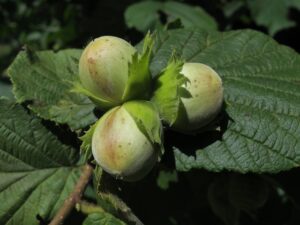Gardeners and sustainability advocates are constantly seeking new additions to their gardens that not only beautify their space but also serve a greater sustainable purpose. Enter the Giant Filbert, a tree that offers shade in summer, a beautiful autumn display, and a bounty of nutritious nuts. In this comprehensive guide, you’ll learn everything you need to know about how to grow giant filbert a remarkable plant and reap its many rewards.
Introduction to the Giant Filbert
The Giant Filbert, or Corylus maxima, is a deciduous tree native to southern Europe and southwestern Asia. Often overlooked for its more famous cousins, the hazelnut and common filbert, the Giant Filbert stands out for its stature and the size of its nuts. By including this tree in your garden, you contribute to the ecosystem by supporting local wildlife, and benefit directly from a harvest of large, delicious nuts that are rich in nutrients.
Planting Giant Filbert
Soil Requirements
Giant Filbert prefer well-drained soils with a slightly acidic pH around 6.0–7.0. The ideal soil will be rich in organic matter to promote healthy root growth and nutrient uptake.
Sunlight and Watering Needs
Choose a planting location that receives full sunlight or partial shade, ensuring the tree gets at least six hours of sun per day during the growing season. Water deeply after planting and keep the soil moist but not waterlogged, especially in the tree’s early years.
Planting Process and Spacing
Plant Giant Filbert trees about 15 to 20 feet apart to allow for their expansive canopy. Dig a hole twice as wide as the root ball and deep enough so that the top of the root ball is level with the surrounding soil. Backfill the hole and water thoroughly to settle the soil.
Adult Size and Pollination
The Giant Filbert can reach considerable heights, typically maturing to between 15 and 20 feet tall, with some specimens growing even larger. Its spread can also be impressive, reaching out to about 10 to 15 feet, giving it a majestic presence in any garden.
Pollination is a critical factor in achieving a successful harvest of Giant Filbert nuts. These trees are monoecious, meaning they have both male and female flowers on the same plant. However, for pollination to occur, the presence of another Giant Filbert tree is often required as they are not self-pollinating. Planting multiple trees within close proximity increases cross-pollination rates, ensuring a more abundant crop. The male catkins are long and yellow, shedding pollen in early spring, while the female flowers are small and red, usually hidden within the buds. Wind carries the pollen from male to female flowers, facilitating fertilization and the subsequent nut development.
Caring for Giant Filbert
Pruning Techniques
Regular pruning helps establish a strong framework for the tree. In the first few years, focus on removing dead or damaged branches and any that are crossing or overly vigorous. After the initial formative years, occasional maintenance pruning is all that’s required, typically in late winter or early spring.
Fertilization Schedule
Apply a balanced fertilizer in the spring, just before new growth starts. Use a slow-release fertilizer to avoid overfeeding the tree. It’s also beneficial to mulch around the base of the tree, which will help retain moisture and provide additional nutrients as it decomposes.
Pest and Disease Management
Giant Filbert is relatively disease-resistant, but it’s still good practice to monitor for any signs of distress. Common pests like aphids and caterpillars can be controlled with insecticidal soap or neem oil, while diseases like Eastern Filbert Blight are managed through resistant cultivars and proper sanitation.
Harvesting and Storage
The first harvest of Giant Filbert nuts typically occurs approximately four to six years after planting, assuming optimal growing conditions and proper tree care. This period allows the trees to mature and develop a robust root system, which is crucial for sustainable nut production. Patience is key, as the yield and quality of the nuts will improve with the age of the tree.
Signs of Readiness for Harvest
Nuts are ready for harvest when the husks start to dry and split open, revealing the shell. This typically occurs in mid-fall; you can check for readiness by picking up a few nuts and gently cracking the shell open.
Harvesting Methods
You can harvest nuts by hand or by spreading a tarp under the tree and using a long handle to agitate the branches. Collect the nuts daily to prevent them from laying on the ground for too long.
Storage Tips
Store nuts in a cool, dry place to avoid spoilage. Proper storage can keep nuts for several months. They can also be frozen for longer storage.
Benefits of Growing Giant Filbert
Nutritional Value
Giant Filbert nuts are rich in unsaturated fats, protein, and dietary fiber. They can be consumed raw as a healthy snack or used in cooking to add a rich, nutty flavor to a variety of dishes.
Environmental Benefits
The Giant Filbert contributes to the environment in multiple ways. It provides food for wildlife, improves soil health, and stores carbon, contributing to the fight against climate change.
Conclusion
By adding the Giant Filbert to your garden, you bring beauty, productivity, and sustainability to your space. With careful consideration of its planting, care, and harvest, you’ll enjoy the many benefits of this remarkable tree for years to come. Whether you’re a seasoned grower or a novice gardener looking to expand your repertoire, the Giant Filbert is a worthy addition. Now it’s time to get out there and start growing!

